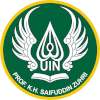Kajian Historis terhadap Perkembangan Resolusi Konflik Etnis dan Agama di Bosnia-Herzegovina
DOI:
https://doi.org/10.24090/jsij.v2i01.7463Keywords:
Conflict, Bosnia, Ethnicity, Religion, ResolutionAbstract
Politically and geographically, Bosnia is often a victim of the Western political divisive propaganda and extremist Islamic movements. This has left Bosnia and Herzegovina embroiled in ethnic and religious conflicts between Bosnians, Serbs and Croats for decades. This journal article explores the history of ethno-religious conflict in Bosnia, and how the government has created a peaceful, multi-ethnic and religious European Muslim nation amid radical siege of "propaganda". It is intended to explain how Movement and Western Politics. This research is a historical study using a data collection method called literature survey. The main sources are magazine articles and YouTube channels interviewing living witnesses to the Bosnian conflict and contemporary Bosnians. Sources have been criticized for their objectivity, particularly in filtering Western "opinions," analyzed with a political-historical approach, and finally concluded at the stage of historiography. Findings show that post-peace Bosnia has failed to declare itself an Islamic state, with politics used by irresponsible political parties to provoke decades of ethnic and religious conflict in Bosnia. ``Three M'' ideology: Multicultural. multi-ethnic; became a rallying cry to unite modern-day Bosnia in the face of its grappling with collapse. All religious adherents are free to practice their faith, and each of the three major ethnic languages has been declared the official language of the countryReferences
Babić, M. (2017). Salafism in Bosnia and Herzegovina. Geographical Overview Western Balkans Mediterranean Yearbook, 183-186.
Bartulović, A. (2015). Islam and Gender in Post-War Bosnia-Herzegovina: Competing Discourses and Everyday Practices of Muslim Women. Dalam C. M. Ramet, Gender (In)equality and Gender Politics in Southeastern Europe, Gender and Politics (hal. 274-296). London: Palgrave Macmillan,.
Bieber, F. (2000). Bosnia‐Herzegovina and Lebanon: Historical Lessons of Two Multireligious States. Third World Quarterly, 21(2), 269-281.
Bougarel, X. (2008). Farewell to the Ottoman Legacy? Islamic Reformism and Revivalism in Inter-War Bosnia-Herzegovina. Dalam N. C. Germain, Islam in Inter-War Europe (hal. 213-343). London: Hurst.
Ćehajić, D. (1978, December 12). Bektashis And Islam In Bosnia And Herzegovina. Anali Gazi Husrev-Begove Biblioteke, 4(5-6), 83-98.
Dijana Pinjuh. (2018). Conversions to Islam in Bosnia and Herzegovina, and the Connections between Converts and their Christian families, from the Ottoman Conquest to the End of the Seventeenth Century. Historical contributions, 37(55), 205-228.
DW Documentary. (2018, Januari 14). Bosnia and Herzegovina: an ethnically divided country | DW Documentary. Dipetik September 15, 2021, dari YouTube: https://www.youtube.com/watch?v=lHSO0RQFRe8
France 24 English. (2018, November 13). Saudi Arabia's increasing influence in Bosnia and Herzegovina. Dipetik September 15, 2021, dari YouTube: https://www.youtube.com/watch?v=oPiKy1xvuYA
Friedman, F. (2000). The Muslim Slavs Of Bosnia And Herzegovina (With Reference To The Sandžak Of Novi Pazar): Islam As National Identity. Objavljeno u: Nationalities Papers, 28(1).
Gottschalk, L. (1986). Mengerti Sejarah. (N. Notosusanto, Penerj.) Jakarta: UI Press.
Hesová, Z. (2019). Islamic Tradition: Questioning the Bosnian Model. Occasional Papers on Religion in Eastern Europe, Article 22, 39(5), 128-139.
Ibrahimpasic, E. (2005). Women Living Islam In Post-War And Post-Socialist Bosnia And Herzegovina. Dissertation.
Karčić, H. (2010, December 25). Islamic Revival In Post-Socialist Bosnia And Herzegovina: International Actors And Activities. Journal Of Muslim Minority Affairs, 30(14), 519-534.
Klemenčić, M. (2000-2001, Winter). The Boundaries, Internal Order And Identities Of Bosnia And Herzegovina. IBRU Boundary and Security Bulletin, 63-71.
Kuntowijoyo. (1995). Pengantar Ilmu Sejarah. Yogyakarta: Yayasan Benteng Budaya.
Macháček, Š. (2007). "European Islam" And Islamic Education In Bosnia-Herzegovina. Comparative Southeast European Studies, 55(4), 395-428.
Madjid, N. (2006). Ensiklopedia Nurcholis Madjid. Jakarta: Paramadina.
Mesarič, A. (2015). Muslim Women’s Dress Practices In Bosnia-Herzegovina: Localizing Islam Through Everyday Lived Practice. Dalam I&N, he Revival of Islam in the Balkans. The Islam and Nationalism Series (hal. 103-121). London: Palgrave Macmillan.
Mesarič, A. (2020, May 11). Disrupting Boundaries Between Traditional And Transnational Islam: Pious Women's Engagement With Islamic Authority In Bosnia-Herzegovina. Slavic Review, 79(1), 7-27.
Oddie, M. (2012, February 1). The Relationship of Religion and the Ethnic Nationalism in Bosnia-Herzegovina. Occasional Papers on Religion in Eastern Europe, 32(1), 34-42.
Oluic, S. (2008). Radical Islam on Europe’s Frontier Bosnia & Herzegovina. National Security And The Future, 1-2(9), 33-52.
Saifullah. (2020). Serba-Serbi Islam Di Eropa Selatan. Padang: UIN Imam Bonjiol Padang.
Sarajlić, E. (2011, July 26). The Return Of The Consuls: Islamic Networks And Foreign Policy Perspectives In Bosnia And Herzegovina. Southeast European And Black Sea Studies, 11(2), 173-190.
Simmons, C. (2002, December 4). A Multicultural, Multiethnic, and Multiconfessional Bosnia and Herzegovina: Myth and Reality. Nationalities Papers Cambrodge University Press, 30(4), 623.
Tabak, H. (2017). A History Of “Who Speaks For Islam?” In Bosnia Herzegovina: An Official Versus Popular Islam DebatE. Gazi Akademik Bakış, 10(20), 299-312.
Downloads
Published
How to Cite
Issue
Section
License
Copyright (c) 2023 Fikri Surya Pratama

This work is licensed under a Creative Commons Attribution 4.0 International License.








